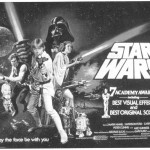Luke Cage, Hero for Hire

Begun by Marvel Comics in 1972, the intention was to create a “hip”, black superhero based on the popular “Shaft” movies of the time. (It was cheaper to create their own carbon copy character than to try and license the original propertyâÂ?¦ just as they did when they created the character of “The Punisher”, ripping off the popular “Executioner” paperbacks.) Luke Cage had the same tough guy persona as Shaft. He worked as a sort of private investigator (albeit one with superpowers). He didn’t take any crap from anybody. He lived in a seedy downtown office/apartment upstairs from a second-rate movie theater. He didn’t generally cross paths with the regular Marvel heroes and villains (at least not at first) but instead seemed to battle a lot of gangsters and drug pushers. The writers created new villains for Cage to fightâÂ?¦ generally African-American or Latino villains. Comics, up to this point, had barely featured people of color as anything but the most cartoonish of caricatures and the serious portrayal of darker-hued heroes and villains was a big step for comics to take.
Our hero, Lucas was a streetwise young tough guy who got framed and thrown in prison. He volunteered for a scientific experiment that could get him released sooner. A jealous and sadistic guard sabotages the experiment and Cage suddenly gains super strength and steel-hard skin. Cage slaps the guard, not realizing the extent of his new powers, and almost kills him. Knowing that this does not bode well for his early release, Cage uses his fists to knock a hole in the prison wall and escapes. He heads for New York and adopts the name “Luke Cage, Hero For Hire”, deciding that he can make a living doing superheroic deeds for cash. Still, more often than not Cage would wind up doing his superdeeds for freeâÂ?¦ he had too much of a conscience to be a total mercenary.
The whole “Shaft” persona may have been a stereotype but Luke Cage seemed to rise above it, becoming more and more his own man as the series progressed. Rather than the “one-night-stand” kind of superstud that John Shaft was, Cage was much more humanâÂ?¦ more down to earth and even more romantic. He began a relationship with a pretty young nurse who worked in a free clinic and was allowed a few scenes of genuine tenderness amidst all the superhero action. These early issues are highly regarded by those who remember it. (In fact, actor Nicolas Cage chose his last name specifically out of admiration for the “Hero For Hire” comics he read as a youth.) The art, especially when Billy Graham was inking George Tuska , was not as flashy as some of the other superhero books but intense and gritty. The stories were generally solid: simple one or two-part stories that spotlighted Black Culture in ways it never had been before. Unfortunately, there was still much resistance to a book of this sort in some of the more prejudiced areas of North America and this may explain why the book’s sales were not as high as they should have been.
After 16 issues the decreasing sales on the book had caused Marvel to change the title of the book to “Luke Cage, Power Man” in hopes of attracting more notice. Sales didn’t increase drastically but the book did manage to hang in there for a few more years. In issue #50 Luke Cage teamed up with another lower-rung Marvel hero, Iron Fist and they went into business together. The title of the book became “Power Man and Iron Fist” and they worked together as a sort of “Odd Couple”. They had nothing in common except outliving the “black P.I.” and “kung fu” exploitation movie genres that had inspired their creation. On their own, neither hero seemed able to carry a title of his ownâÂ?¦ but together they were able to carry on for several more years.
There have been more recent attempts by Marvel to resurrect the Luke Cage character, redesigning him to be more in step with current African-American culture. One recent incarnation has Cage wearing lots of “bling” and acting more “gangsta”. (Basically trading in an outdated stereotype for a more modern one.) This kind of “updating” has worked for many of Marvel’s other superheroes (Spider-Man in particular) but didn’t seem to do a thing for Luke Cage’s standing in the superhero community. As a supporting character in Marvel’s “Alias” title Brian Michael Bendis’ version of Cage has an affair with a white superheroine and fathers a child with her out of wedlock. It’s too bad that Marvel didn’t give this more human version of Cage a shot in his own book because there seems to be much more potential here.
Recently Marvel put out “The Essential Power Man” a thick paperback collecting the early issues. Here’s hoping than the fans take notice and demand that Luke Cage be brought back in a new series worthy of the original.



